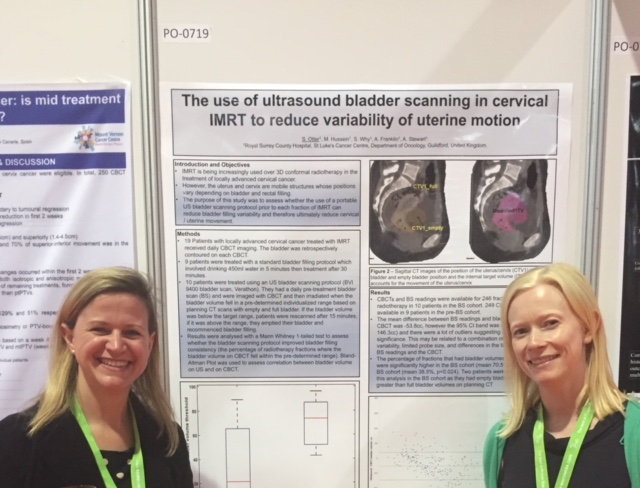What is cervical cancer?
The cervix is the neck of the womb. Cancer can develop within the cervix. Precancerous changes can occur before cancer develops which may be reversible. These can be detected with cervical screening.
How common is cervical cancer?
Cervical cancer is the second commonest cancer worldwide in women aged 15-44 and the 11th most common cancer in the UK. There are approximately 2500 new diagnoses of cervical cancer and 1000 deaths per year in the UK (https://www.england.nhs.uk/wp-content/uploads/2017/04/service-spec-11.pdf).
Why is the cervical screening programme so important?
It is vital to detect cervical cancer early as this leads to the best outcome for patients. Many cervical cancers are caused by the human papillomavirus (HPV) which is spread sexually. The majority of people who become infected with HPV will be able to clear it from their system, but in some people it is able to persist and may eventually cause cancer. The changes that happen in the cervix go from pre-cancerous changes to cancer usually over several years and therefore there is the opportunity to detect pre-cancerous changes and treat the condition before it progresses to cancer. This is why it is so important for women to attend for cervical smear tests. It is estimated that the national cervical cancer screening programme saves around 5000 lives per year. Women are invited to attend for cervical screening every 3 years if aged 25-49 and every 5 years if aged 50-64.
Why is the HPV vaccination programme so important?
The HPV vaccination programme was introduced into schools for girls aged 12-13 in 2008. As HPV causes the majority of cervical cancers, it is expected that the vaccination programme will decrease the number of new cases of cervical cancer significantly although it is too early to see this yet. However, we have seen the rate of HPV infection and precancerous lesions decrease which is very encouraging. It is still important for girls who have been vaccinated to attend for cervical screening as not all of the high risk types of HPV are covered by the vaccine.
What are the symptoms of cervical cancer?
Common symptoms of cervical cancer include bleeding (after sex, in-between periods or after the menopause), pain and discomfort during sex, unpleasant vaginal discharge. Any abnormal bleeding should be reported to your GP and investigated further. Your GP may examine you and will refer you to a Gynaecologist for a more detailed examination.
How is cervical cancer treated?
Precancerous changes can often be treated with outpatient procedures. If cervical cancer is small and localised at the time of diagnosis then it is treated with surgery which aims to spare fertility if at all possible. Early diagnosis is vital as patients with early stage disease have an excellent cure rate.
However, if the cancer is locally advanced then these women are usually treated with chemotherapy and radiotherapy combined. There is still a very good chance of cure with this treatment.
Radiotherapy at the Royal Surrey County Hospital
At the Royal Surrey we are proud to be able to deliver high tech radiotherapy to our patients which aims to give a very high dose of radiotherapy to the tumour whilst reducing the dose to the surrounding normal tissues such as the bowel. We achieve this by using Intensity Modulated Radiotherapy (IMRT) which shapes the radiotherapy dose and by using daily CT imaging to check the position of the cervix. This ensures that we are treating the tumour and minimising the dose to the surrounding tissue. Internal radiotherapy (brachytherapy) also forms part of the treatment for cervical cancer and we are able to use additional needles to boost the dose to the tumour thereby ensuring very high cure rates. We use the ultrasound funded by GRACE during the insertion of the equipment for brachytherapy to ensure it is in the correct position. Patients also receive weekly chemotherapy with their radiotherapy.

